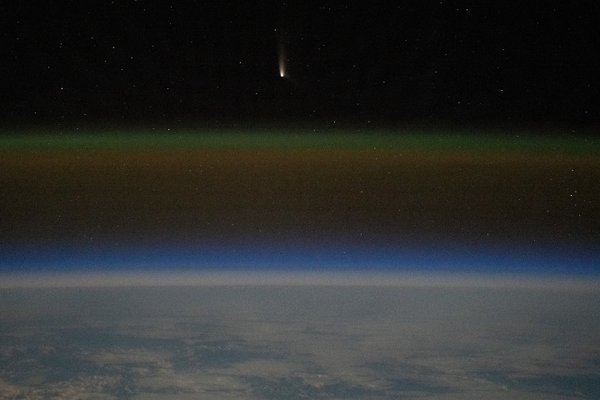A comet that only passes by Earth once every 80,000 years could be visible at night in the Philadelphia region over the coming days and weeks.
The ancient, icy mass — called Tsuchinshan-ATLAS — was discovered last year by researchers at observatories in China and South Africa. It's known as a long-period comet because its orbit spans a longer period of time than others like the well-known Halley's comet, which cuts through our solar system every 76 years.
MORE: Gillian's Wonderland Pier closes leaving questions about what's next for Ocean City's boardwalk
The comet making an appearance now is estimated to be within 44 million miles of Earth, according to the NASA Space Observatory. The space agency and other observers have been tracking its movements and photographing it for weeks. Until now, it mostly has been visible in the Southern Hemisphere. But from now through the end of October, there will be opportunities to catch a glimpse of the comet in the Northern Hemisphere — especially this week.
Derrick Pitts, chief astronomer at the Franklin Institute, talked about the comet in a video explaining how best to view it. The prime window to see it started Saturday. Depending on weather conditions, it will be visible low on the western horizon just after sunset each night.
"It'll move higher into the sky and become more visible as we move into the next week or so in October," Pitts said in the video posted Saturday. "It will begin to dim as it moves further away from the sun, but you should be able to see it with a pair of binoculars."
NASA said the best time to observe the comet is now through Oct. 24. Although possibly visible to the naked eye, it's recommended to use either binoculars or a small telescope for the best view.
"The head of the comet, comprised of the nucleus and the coma, along with the tail should be visible ... under clear, dark skies," Pitts said.
Comets are frozen bodies of ice, gas, rocks and dust left over from the formation of our solar system about 4.6 billion years ago. As they move nearer to the sun, heat causes the ice to turn into gas that creates a glowing body and tail that can extend for millions of miles. NASA officials told NPR that Tsuchinshan-ATLAS is about two miles across and its tail is tens of millions of miles long.
The video below shows a time-lapse view of the comet taken from the International Space Station last month.
The comet is believed to have formed out of vast cosmic shell — called the Oort Cloud — that envelops our solar system in a sphere. The Oort Cloud is believed to span up to 10 trillion miles from the sun and can't be visually observed, because its particles are spread out too far from the light of stars.
Comets from the Oort Cloud have been discovered in greater numbers in recent years with the help of better instruments used to observe them. Tsuchinshan-ATLAS will be followed by a second comet that was discovered on Sept. 27 and may be visible from Oct. 24 to Halloween.
Pitts said the rarity of the event warrants setting aside time to try to observe the comet.
"This could be a once-in-a-lifetime experience, so take some friends out with you and enjoy the view," he said.


